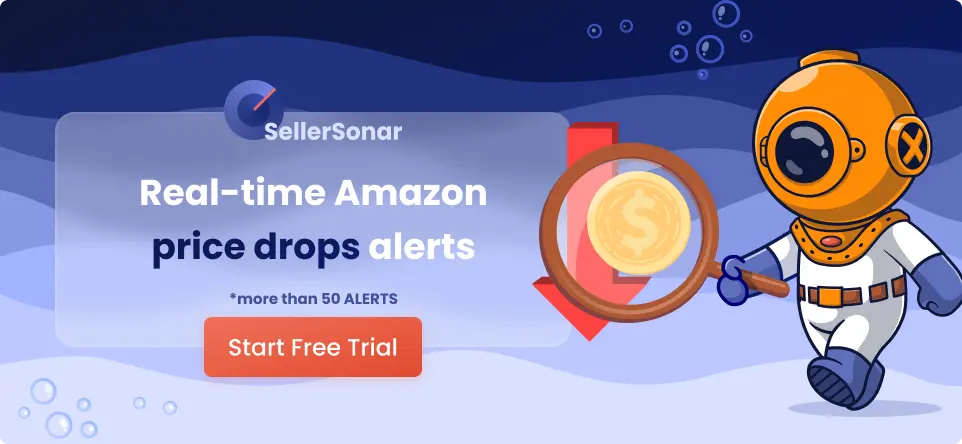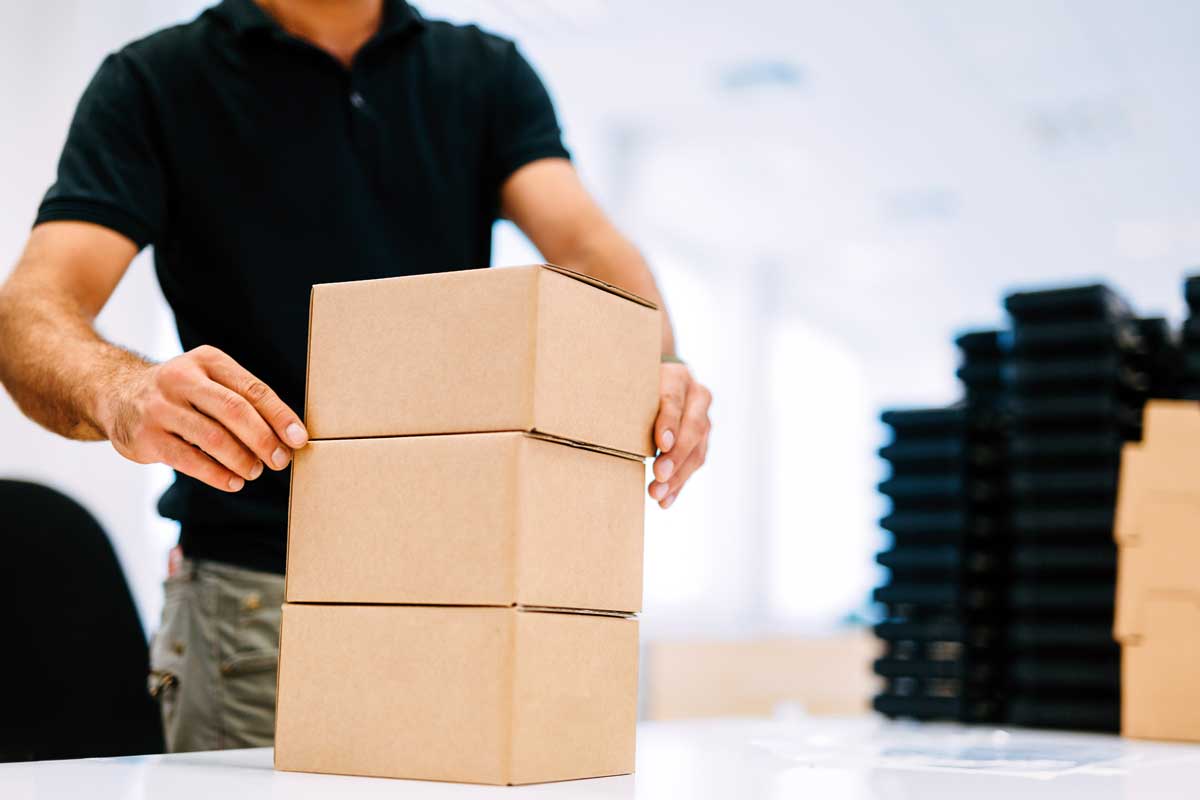Table of Contents
 While a lot of sellers on Amazon want to scale their business fast and maximize profits, they may overlook one lucrative opportunity to do so – wholesaling on Amazon. Nevertheless, this is one of the efficient strategies to grow your business. On the other hand, wholesale Amazon incurs essential resources and funds.
While a lot of sellers on Amazon want to scale their business fast and maximize profits, they may overlook one lucrative opportunity to do so – wholesaling on Amazon. Nevertheless, this is one of the efficient strategies to grow your business. On the other hand, wholesale Amazon incurs essential resources and funds.
The idea behind Amazon wholesaling is to make a profit from B2B sales due to buying in bulk. Amazon wholesalers buy big consignments of products in popular categories from manufacturers and resell them with profit to retailers.
As a matter of fact, Amazon wholesale business process looks similar to retail arbitrage. However, it has significant differences. They range from investing substantial money upfront to managing huge consignments of inventory.
Thus, if you’re interested to start Amazon wholesaling, read our guide to find out what are the wholesale products to sell on Amazon with profit and how does this model work.
What is Amazon Wholesale?
Amazon wholesale selling means buying products in bulk from the manufacturer or supplier at a discounted price. After that, the wholesaler sells them to retailers with a profit margin.
With this model, the wholesaler needs to procure large quantities of inventory to get good price conditions from the manufacturer. At the same time, since the per-item price is low, the wholesale distributor can squeeze out a very good profit margin when reselling inventory to retailers.
For example, if a retailer orders 500 handbags and the manufacturer charges $20 per bag. When wholesaler orders 10,000 handbags from the same manufacturer, they charge only $10 per bag. The wholesaler, who resells 500 handbags to the retailer for $15 per bag, will earn $5 on each item. As the result, the manufacturer, wholesaler, and retailer will make a profit.
The wholesaler has good chances for success since manufacturers typically prioritize bulk orders.
Also, the risk of failure is much lower compared to, for instance, private label businesses. This is because, as a rule, wholesalers sell brands and categories that are popular with the shoppers. On top of that, there’s no need to invest too much money in brand promotion.

How is Wholesale Different from other Business Models on Amazon?
Just to remind you, there are six basic business models on Amazon:
- Private Label;
- Wholesale;
- Retail Arbitrage;
- Online Arbitrage;
- Dropshipping;
- Handmade.
Compared to the majority of the models, wholesaling is a different level of doing business. It implies managing big volumes of inventory and considerable investment.
The differences between the major business models are as follows
Wholesaling and Private Label
Unlike Private Label sellers, wholesale suppliers don’t necessarily create a new brand. They may resell a known brand under an existing listing on Amazon.
Wholesaling and retail arbitrage
Retail arbitrage merchants, as the name prompts, buy products from retail stores or websites with a discount and resell on Amazon. This is similar to the wholesale model, but the scale is different. Wholesalers buy big volumes from the manufacturers hence the discount.
Wholesaling and dropshipping
Dropshippers list other suppliers/manufacturers’ products on Amazon. When a shopper purchases an item, the supplier ships it to the shopper. Dropshippers are mediators, while wholesalers physically own their inventory.
Challenges of Wholesaling
In fact, when you start selling wholesale on Amazon, you need to be aware of the challenges that you may face on the way. This will help you mitigate the risks.
Finding a profitable product to resell
Add value to existing product
Typically, resellers make research, select popular products on Amazon and add value to them. That could mean a discounted price, better or free shipping conditions, etc. In other words, you should be able to successfully compete with other merchants on that product. With such an approach, chances are that you win the Buy Box and secure a share in the product’s total sales. At the same time, the risk of failure with the product is low since the item is already in demand.
Find a product new to Amazon
Another approach is to find a product that doesn’t exist on Amazon. If you can do so, you will establish yourself as the exclusive seller. However, this may be a tough job considering the variety of products sold on the marketplace.
Establishing Wholesale Account
A new Amazon distributor with little or no track record can meet a lot of obstacles. This refers to both finding a customer and manufacturer base. When you talk to manufacturers or brand owners, offer them ways to help grow their sales and add value to their brand. On top of that, you can offer a presence on Amazon. They may consider it a business development option.
Large Order Quantities
Wholesaling implies big turnovers. You have to invest big funds upfront. In addition, you need to effectively manage large consignments of inventory. This ranges from timely reorder of big volumes to mitigating the high risks of dealing with huge inventory levels.
How to Wholesale on Amazon?
Selling wholesale on Amazon does not only mean buying large quantities of inventory at discounted prices and reselling them. Amazon distributors should be able to meet demand from multiple customers at a time. On top of that, they have to optimize their inventory management processes, and more.
The Basic Steps of Amazon Wholesaling:
- Registering a professional seller account;
- Selecting a high-demand product to resell;
- Sourcing the inventory;
- Listing the item on Amazon (under existing or new listing);
- Developing and scaling your business.

Step 1. Registering a professional seller account
In order to sell wholesale, sellers register a Professional account on Amazon. A Зrofessional account saves you money. Amazon charges professional sellers $39.99 per month. At the same time, individual sellers pay $0.99 per sale. Consequently, if you make over 40 sales a month, it’s better to register a Professional account. Moreover, as a professional seller, you have access to Amazon seller tools, including Buy Box eligibility, order reports, and more.
Step 2. Selecting a high-demand product
Product research is one of the most time-consuming tasks in wholesaling. To find a product that will sell successfully, merchants need to do product research. After that, they have to check the product’s profitability to ensure that they don’t lose money.
Product research
A good choice for a wholesale product is a known medium-sized brand that already sells well. Preferably, it should be able to generate recurring sales. Also, a good idea is to search for brands that are not interested to list products on Amazon themselves.
Tips for wholesale products that sell on Amazon
- Choose established brands;
- Look for the products of medium or small producers;
- Ensure Amazon doesn’t sell the product you selected;
- Check that it’s not a private label product;
- Don’t select the high competition items;
- Focus on the products with good profit margin;
- Avoid oversized, fragile, and overweight products;
- Don’t consider the trendy products that will not last;
- Stay away from extremely seasonal items;
- Avoid licensed and restricted category products.
Product profitability
To be on the safe side with your sales, it’s better to estimate your product’s profitability in advance. To do that, subtract Amazon fees and the product costs from the sales price. If you’ve got a positive figure, then your item is profitable.
In order to correctly estimate a product’s profitability, you need to account for all fees Amazon charges you. The easiest way to estimate product fees is to use the Amazon FBA calculator.
Step 3. Sourcing the inventory
As a matter of fact, the process of selecting suppliers for wholesale products differs from the same for retail inventory.
When you’ve selected a product to wholesale, contact a brand owner or manufacturer directly. Some of them have an option of shipping products on Amazon, which is a plus.
Where to find wholesale suppliers?
You can look for your supplier in the wholesale directories. Another possibility is US Import Database.
Tips for finding wholesale suppliers:
- Dollardays.com;
- Liquidation.com;
- Big Lots;
- Gabes;
- Tuesday Morning;
- Price Master;
- World Wide Brands;
- SaleHoo;
- Lotus Light.
How to talk to a wholesale supplier?
- Google the supplier’s brand and find their contact details.
- Leave a message asking to initiate a negotiation.
- Specify that you are a wholesaler or distributor (the supplier’s website may have a respective tab).
- Negotiate with the supplier. Convince them that you’ll add value to a brand.
- Don’t get upset if the brand says ‘no’. Try to persuade them that you’re a good candidate.
- Conclude a deal.
Do You Need to Have a Legal Entity to Become a Wholesaler?
Though it’s legal to sell on Amazon without having a legal entity, in the case of wholesaling some states may have specific regulations. Therefore, you’ll need to check the legal and tax requirements of the state where your wholesale business is registered.
On top of that, some brands may prefer that you have a registered business. You may also need a resale certificate and EIN (Employer Identification Number) number.
Step 4. Listing the item on Amazon
As far as the majority of the products that wholesalers sell, already exist on Amazon, there’s no need to create a new listing. You can add your offer to an existing product listing.
However, if your product doesn’t exist on Amazon, as the case may be, you’ll need to create a new listing. In that case, follow Amazon’s listing guidelines.
Step 5. Developing and scaling your business
After you’ve listed your products on Amazon, you need to promote them. Since you are most likely selling a brand that exists on Amazon and has already invested in ads, you don’t have to spend much.
Also, you need to monitor product sales metrics closely. This is because you need to know what’s bringing you profit and what’s not.
Amazon monitoring software is an efficient way to stay on top of your sales. SellerSonar offers instant Amazon alerts to protect your sales. With us, you are aware of all listing changes, Buybox hijackers, new/deleted reviews, keyword rank history, and product suppressions.
Try SellerSonar now. Register for our 29-day trial and boost your incredible journey of running your business on the platform.

